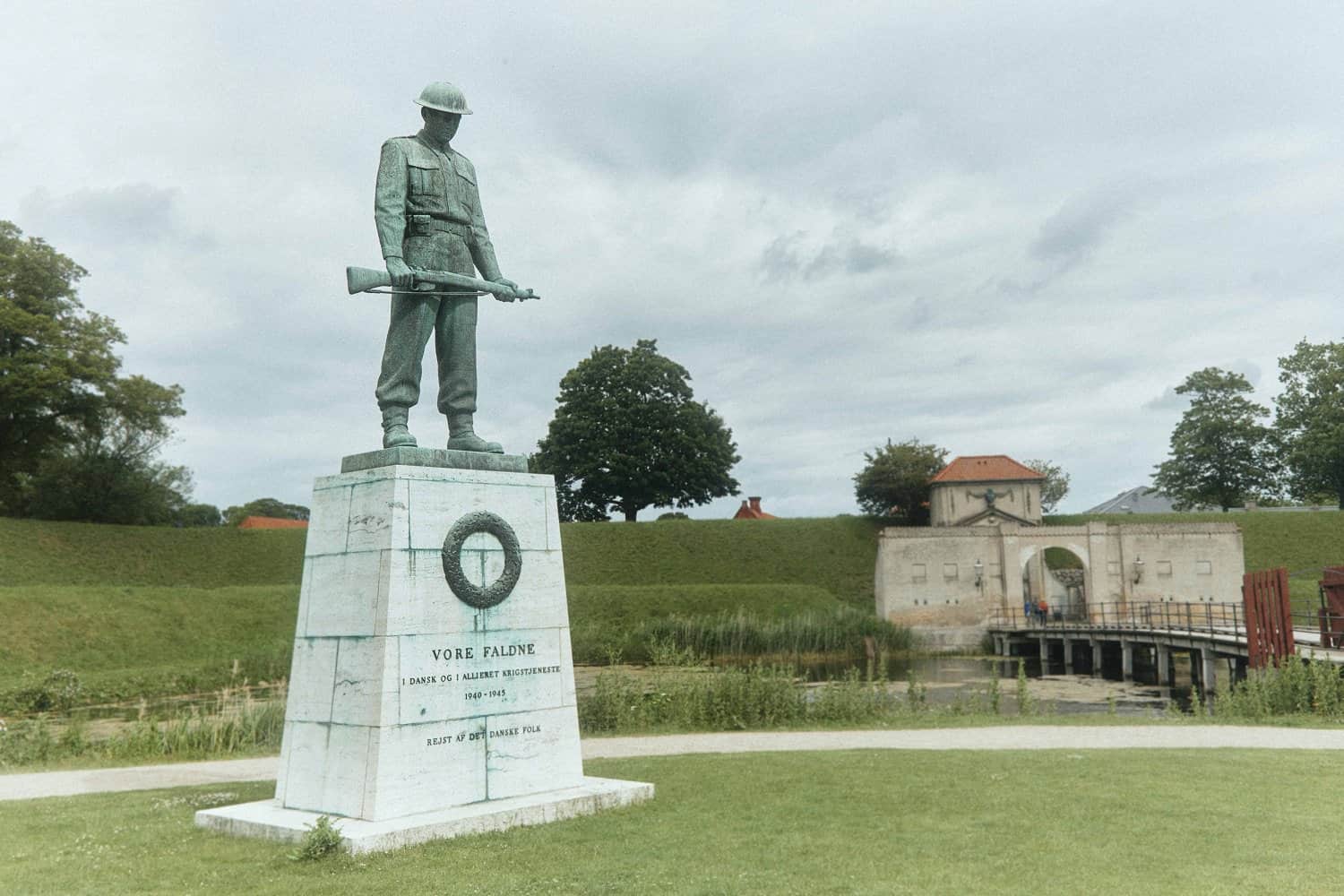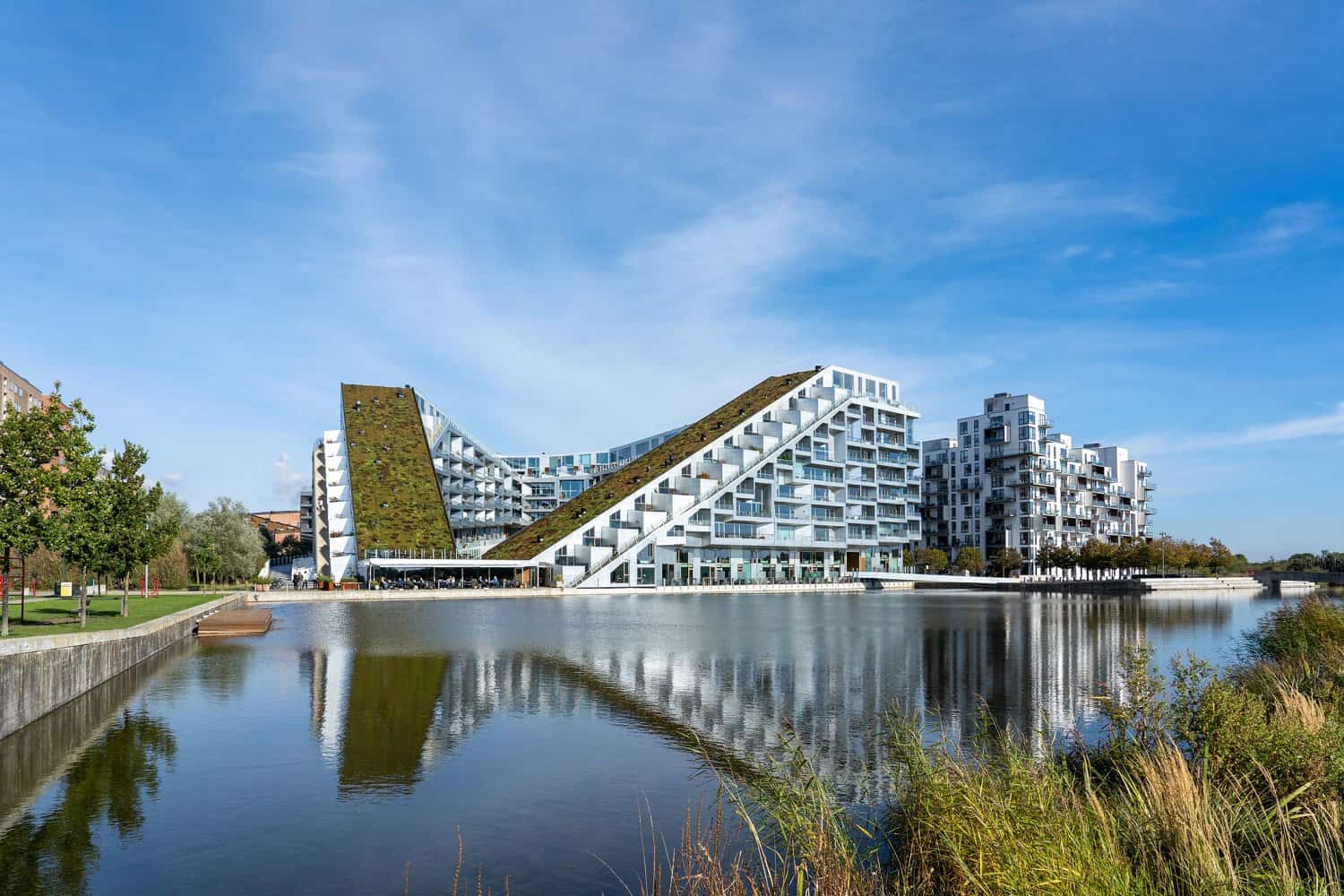Danes love a festival, and they are greeting a summer calendar that is once again full of them.

Copenhagen city skyline in Denmark at famous old Nyhavn port at sunset. Picture: iStock
Over the course of the coronavirus pandemic, Copenhagen, Denmark, somehow seems only to have become more thoroughly itself. With restrictions long gone (they were lifted in January), and summer at hand, the city’s outdoor spaces, designed to extract every bit of joy from summer, have multiplied.
There are more harbourside spots where one can sip wine and swim, while devotion to environmental sustainability has generated an entirely new hangout for the green-minded. The Danish fetish for buttery pastries has transformed itself into a veritable eruption of new bakeries, while the broader din- ing scene – already world-class – has become bigger and better.
And in a city where bikes already constitute the primary method of transportation, Copenhagen is preparing for its cycling apotheosis: The Tour de France started here yesterday.
What’s Happening
For the first time in history, the Tour de France’s Grand Depart begins in Denmark, with a 13km time trial through the streets of Copenhagen before moving on, during Days 2 and 3, to stages that start farther west, in Roskilde and Vejle.
On Wednesday, the competing teams were presented first on a ride through the city and then in a special event, complete with live music, at Tivoli Gardens. The first day’s race ended at Copenhagen’s City Hall, but a big cycling-themed party will take place in Fælledparkenon Days 1 and 2, with live music, bike games for kids, and large screens for watching. Today, the route will open for cyclists of all skill levels to bike a “Tour de Copenhagen”.

But that will hardly be the only celebration. Danes love a festival, and they are greeting a summer calendar that is once again full of them. This year, all the old favourites – from the heavy metal paroxysms of Copenhell and the smooth vibes of the Copenhagen Jazz Festival to the gastronomic excesses of Copenhagen Cooking to the highbrow discussions of the Louisiana Literature Festival – are back, and have been complemented with new additions like Syd for Solen.
ALSO READ: WATCH: Hotel with no walls or ceilings gets thousands of bookings at R5,460 a night
But the biggest of all – more rite of passage than a mere festival – is Roskilde, which takes place from Wednesday to today. This year it will attempt to channel all that pent-up energy with a postponed 50th-anniversary celebration and the largest roster – 132 acts, including Megan Thee Stallion, Dua Lipa, Post Malone and the Strokes – in its history.
What to See
Several of Copenhagen’s cultural institutions used the pandemic to finish long-planned improvements. The Danish Design Museum, which for a while was basically a warren of rooms filled with chairs, reopens tomorrow after a two-year restoration – with an exhibition on how design can address global challenges like climate change and pandemics.

And one of Europe’s finest collections of 19th-century French art got a new showcase earlier this year when Ordrupgaard debuted its new wing, underground but open to the sky, on the edge of the city. But perhaps the most topically relevant renewal is the Freedom Museum. Formerly called the Museum of the Danish Resistance, it was destroyed by arson in 2013, and entirely rebuilt from the ground up.
Its interactive exploration, of how Germany’s largely unobstructed takeover of Denmark in 1940 gradually transitioned into active resistance that sabotaged German weapons and mustered a volunteer fleet of fishing boats to spirit the country’s Jews to safety, makes for an especially poignant lesson these days.
Where to Eat
Spurred perhaps by two long lockdowns in which takeaway coffee and cake were among the few pleasures left, the city that invented the Danish (although here they’re called wienerbrød) has entered a new Golden Age of pastry.

There’s now an independent, chef-led bakery in almost every neighbourhood, and often long lines stretch down the sidewalk. Some of the newest to try: Albatross & Venner, Benji and Ard – and that’s not counting Apotek 57 and Studio X, two cafes attached to different design shops, where they also do some mouthwatering in-house baking.
YOU MAY ALSO LIKE: Hiking down to phantom ranch: A cluster of century-old stone cabins
The rest of the dining scene is thriving as well – maybe a little too much. For all its acclaim as an international dining destination, pre-pandemic Copenhagen still had a hard time convincing its locals that restaurants were for more than just birthday celebrations and weekend date nights.

But since restrictions were lifted in January, they seem to have gotten the message; suddenly places at all levels of the food chain are fully booked most nights. Luckily, there’s a slew of new places to meet the demand.
Chef Christian Puglisi’s groundbreaking Relæ and his natural wine bar, Manfreds, both closed during the pandemic, but from those losses, three exceptional spots have risen. At Koan, housed in what was Relæ, chef Kristian Baumann injects some of the flavours and techniques of his Korean heritage into his precision-cut Nordic cuisine, for dishes like a plump, peppery mandu with fjord shrimp, or a baked Jerusalem artichoke served with a luscious langoustine cream.

Across the street, in the cramped, convivial space that was Manfreds, its former chef, Mathias Silberbauer, serves joie de vivre at Silberbauers Bistro, along with relaxed Provençal cooking with an emphasis on bracingly fresh seafood and soul-satisfying comforts like onion tart and white bean stew.
After a residency at Blue Hill at Stone Barns, chef Jonathan Tam returned to Copenhagen and opened Jatak, an intimate jewel of a restaurant designed by his wife, Sara Frilund, where he serves re- fined dishes. These include delicate curves of raw brill twinned with sweet steamed pumpkin; and strips of endive whose crisp bitterness is both enhanced and softened with a housemade sesame sauce.
The dishes are a deeply personal reflection of Tam’s Cantonese background. New dining neighbourhoods are also emerging. Tucked into a postage-stamp of a forest on the city’s southwestern edge, Banegården used to house Copenhagen’s railway works.

But the timbered buildings have now been repurposed by green food businesses, including a farm shop, a locavore restaurant and, yes, a bakery – one with excellent croissants and a commitment to sustainability so serious that there are no disposable cups: You can only get takeaway coffee via a deposit system for the thermos-style cups.
But perhaps the most exciting transformation is of the stretch along the southern end of the city’s lakes. At Propaganda, Youra Kim’s Korean fried chicken is already iconic. And at Brasserie Prins chef Dave Harrison makes old-school French dishes.
This article was first published on The New York Times and was republished with permission. Read the original article here.





